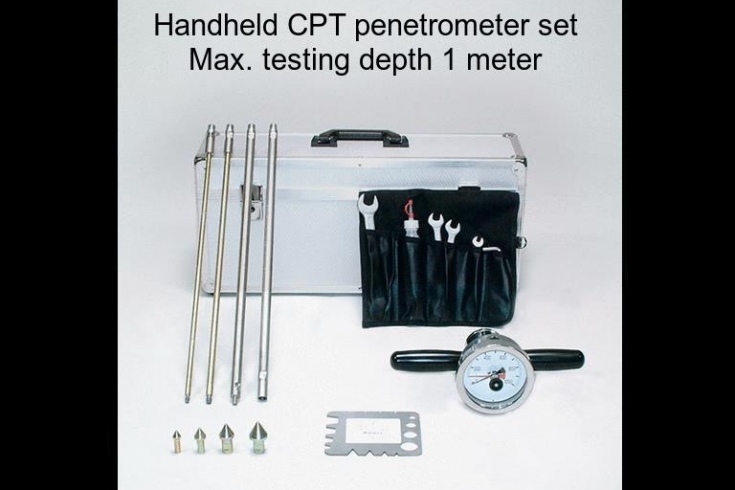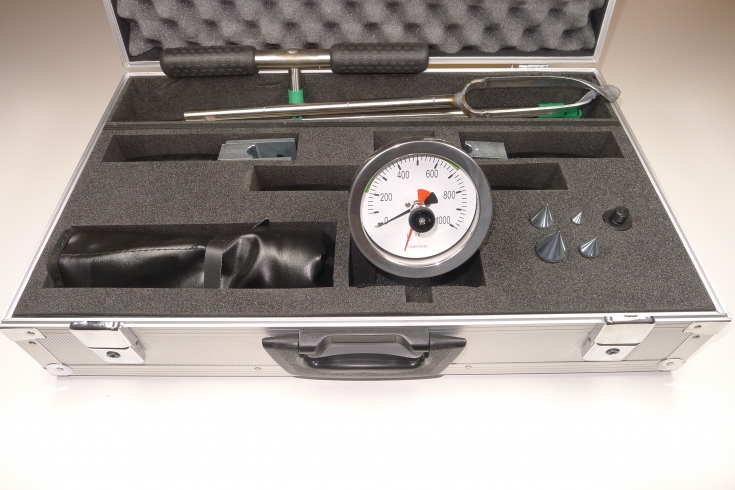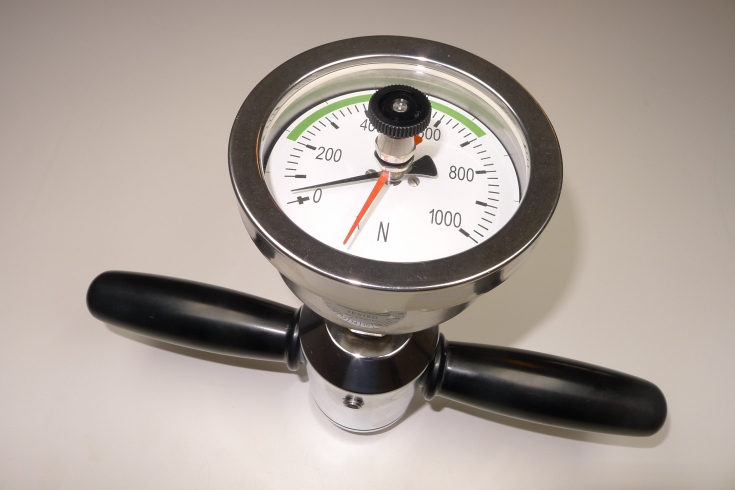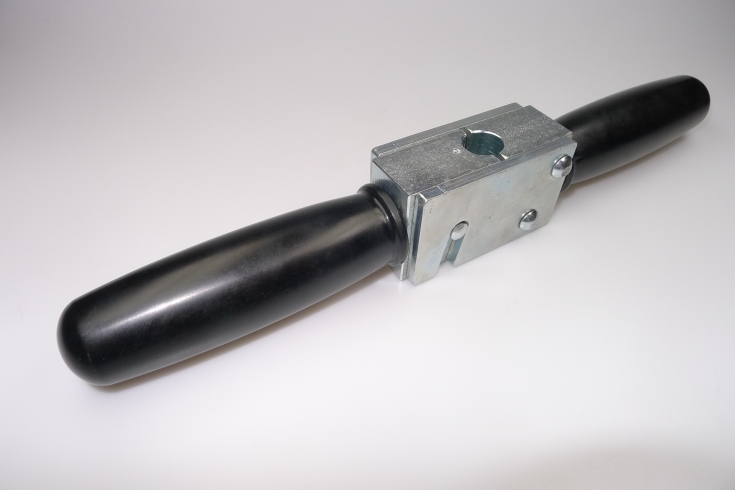Our handheld CPT penetrometers are primarily used to determine the bearing capacity of the upper 2 – 3 meters of the soil. Use this device to determine penetration resistance; this is representative for the bearing capacity of the soil. Since our penetrometer is an easy-to-use measuring tool, it allows for quick and accurate assessment of soil conditions and it is used for various purposes by many international companies:
Suitability of Roads for Heavy Vehicles
Construction works depends on the use of heavy machinery, like dozers, excavators, crawler cranes, hydraulic cranes, and alike. These machines generate high ground pressures, whilst the access roads to the job sites and the job site itself are in general not paved. The risk exists that the bearing capacity of the soil is not sufficient, and a machine subsides or even tips over. The handheld CPT penetrometer has therefore proved to be an indispensable tool for assessing the roads and job site terrains.
Geotechnical Soil Investigation
Since the handheld CPT penetrometer is a useful geotechnical instrument to measure soil compaction and the bearing capacity of the ground, you can use it to gather data that can be used for basic advise for the foundations of roads, small buildings, pedestrian bridges, and alike.
Agriculture
The agricultural industry could benefit from information provided by a handheld CPT penetrometer, when it comes to CPT testing. Our penetrometer is able to identify areas of high compaction, plow pans, and clay zones. This helps you determine appropriate irrigation, fertilization, and cultivation practices. International agronomists use the penetrometer for the research of the (expected) growing circumstances of plants in the soil.
Farming
In farming, the handheld CPT penetrometer is used to determine the settings for farming machinery.
Greenhouses
The horticulture is an industry that is developing rapidly and it is becoming more and more automated. This high degree of automation is essential, since todays green houses can be as large as several hectares. The transport inside the green-houses is primarily done by means of fully automated tube-rail-systems. Because of the dynamic forces to which this system is exposed and the fact that it is based on soft and during the growing process constantly changing mold, it is of great importance to have exact data available of the soil conditions. This to avoid any instability or even tipping over of the carts running on the tube-rail-systems. You can also use our soil sampling kit to gather more information about your soil conditions.
Wood Logging
Assessing the impact of logging operations on forest soil compaction is important. Our handheld CPT penetrometers help soil scientists and contracting officers verify that specifications on soil compaction limits are being followed.
Contractors
In civil engineering, our handheld CPT penetrometers help pinpoint compaction problems that might require more extensive soil testing. This tool is also useful for looking at variability or changes in soil strength caused by equipment, vehicles, and foot traffic. If you want to know more about the groundwater levels as well, you can use our dissipation testing materials.
Tree Planting
Forest tree nurseries and landscape gardeners benefit from our handheld CPT penetrometers as well. Soil compaction begins to inhibit the root growth of most plants when the soil’s strength is about 1,500 kPa. The roots of many plants quit growing when the soil’s strength reaches about 2,500 kPa. With our handheld penetrometer, you can identify these areas fast and easy. Use this information to enhance the (expected) growing circumstances of plants in the soil.
Soil Compaction
In cases where the soil was compacted artificially, our handheld CPT penetrometers have proved to be an excellent tool to evaluate how well the compaction of the soil was done and at what rate.
To use our handheld penetrometers, you apply constant pressure on the built-in hand grips to push the sounding rods and conical tips perpendicularly into the ground. The resistance of the soil is determined by dividing the reading by the surface area of the selected conical tip. A drag pointer records the highest value measured. Avoid jerking pushes, since they yield values which are too high, and which do not represent the soil.
You can read the resistance measured by the cone from the pressure gauge as indicated by the black pointer. The maximum resistance recorded during the entire test is indicated by the drag pointer. You can now determine the resistance to penetration (kPa/cm²) of the soil by dividing the recorded value by the surface of the conical tip. The value of the resistance to penetration determines the surface of the conical tip. For high values, a small conical tip has to be used and for low values, a larger conical tip is to be applied. The larger the conical tip, the more accurately the value of the resistance to penetration can be determined.
In order to acquire reliable data, the sounding rods and conical tip are to be pushed into the ground at a consistent speed. An operator’s field notes are helpful when data requires editing because of unusual conditions, such as rocky soils, large roots, voids, buried organic materials, and dry conditions. Conduct multiple tests at several locations in a given area to better understand variations in soil conditions and reduce the effects of operator inconsistency.
Our handheld CPT penetrometer composes of:
- A measuring body with 2 push handles and an accurate hydraulic reading dial (range up to 10,000 kN/m2 (= 10,000 kPa), accuracy ± 8% of FS) equipped with drag pointer
- 3 stainless steel sounding rods (D = 15 mm, L = 450 mm)
- 1 stainless steel sounding rods (D = 10 mm, L = 450 mm) with a 1 cm² conical tip
- 3 conical tips, i.e. a 2 cm² (D = 16 mm), a 4 cm² (D = 22 mm), and a 6 cm² (D = 28 mm) tip
- 3 open-ended spanners
- Cone wear gauge to check the dimensions of the conical tips
- Compact aluminum carrying case
- Measurement data conversion chart
- Calibration certificate and instruction manual
- Optionally, extra sounding rods for testing to a depth of max. 3 meter and a hand-operated auger










